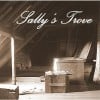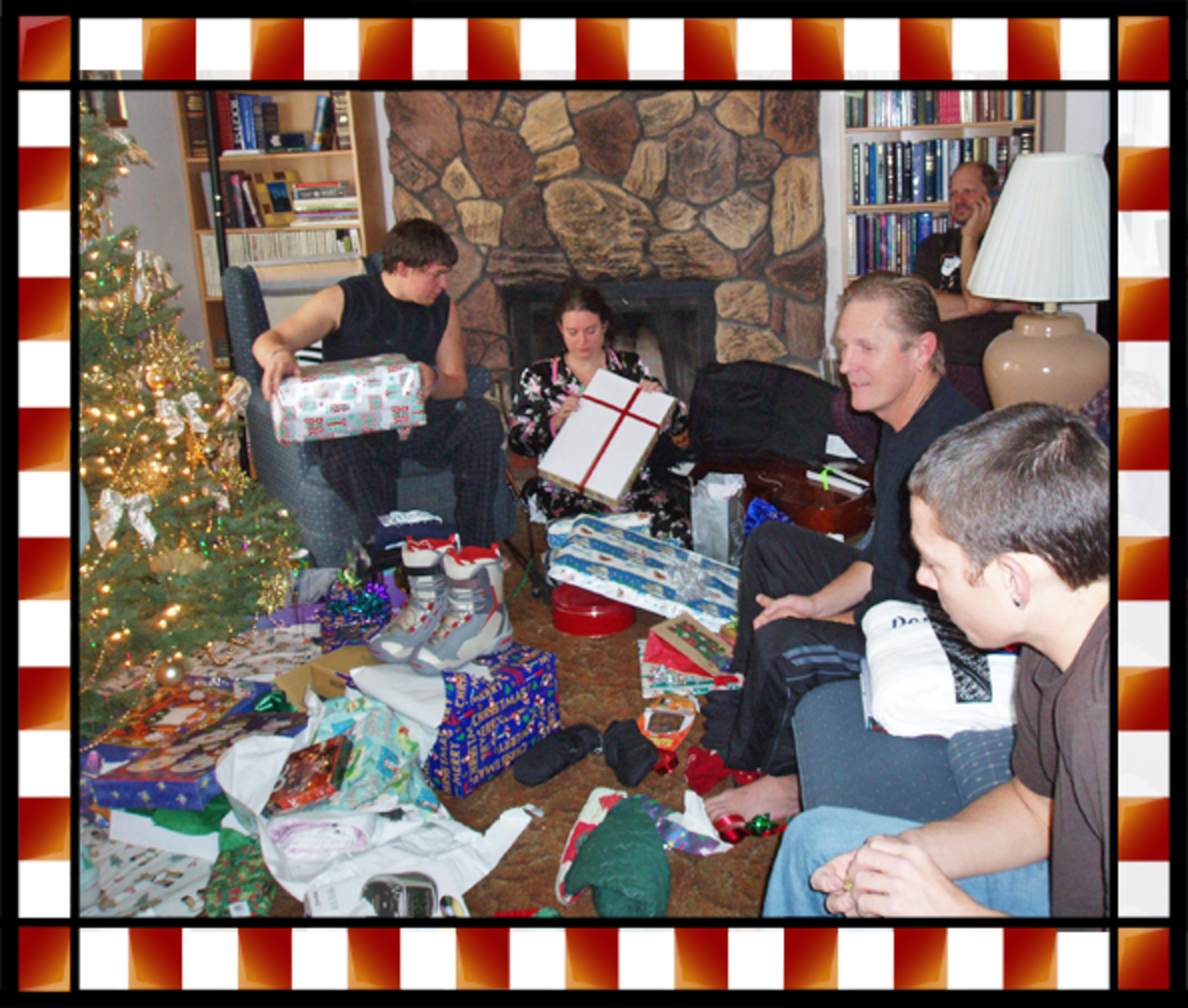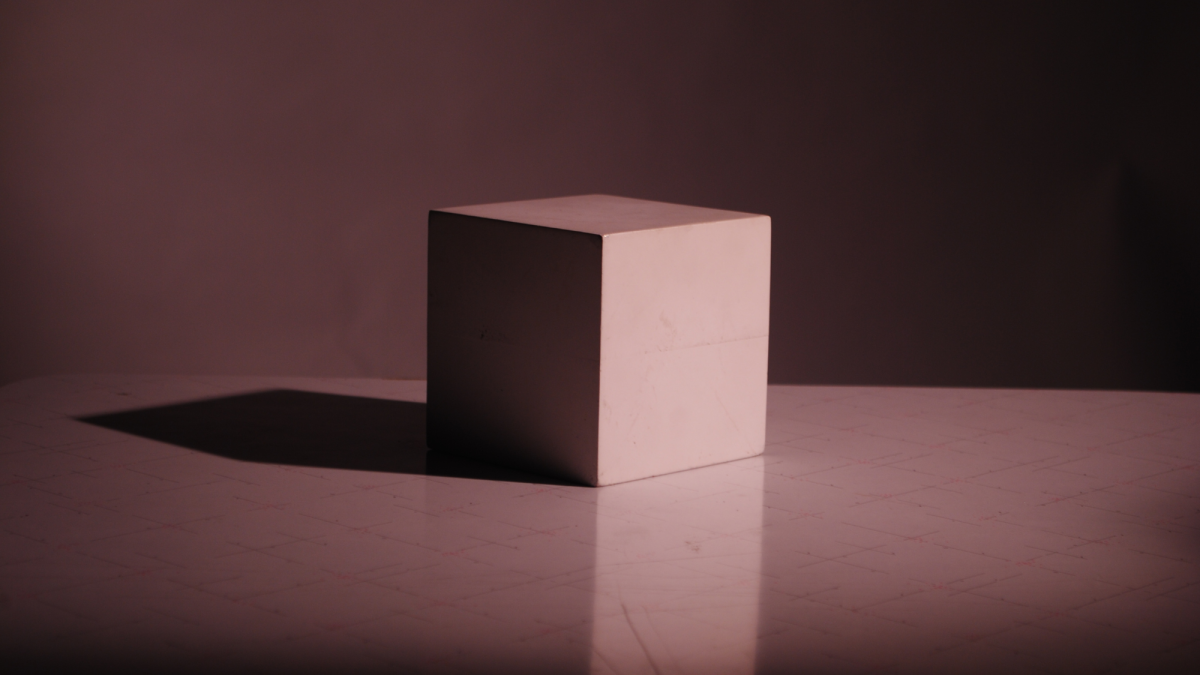Squashing Coins on Railroad Train Tracks

Family Reunion Time
On a clear and sparkling late August afternoon my daughter and I and an entourage of family members headed up the street from Aunt Katie's house to the train tracks. We had a pocketful of change to lay on the steel rails for one of the frequent speeding freight trains to run over. If we were lucky, we'd eventually retrieve at least two or three shiny, pressed coins to take home as mementos of our 2011 family reunion in this tiny and much-loved Midwestern town.
While the oldest and youngest of us gabbed, standing at the crossing under a crystal-clear afternoon sky, my daughter and her younger second cousin placed about 15 coins on the steel rails, marking the placements with rusted spikes and cleats they found scattered among the rail bed gravel. As we assembled there, an occasional car or truck drove by, crossing the tracks, and we all exchanged friendly waves. I could imagine the drivers and passengers saying to each other, "Bless her heart, Katie sure does enjoy her city-kin's visits. Let’s hope they all make it home for supper without getting run over."
Crossing the Tracks
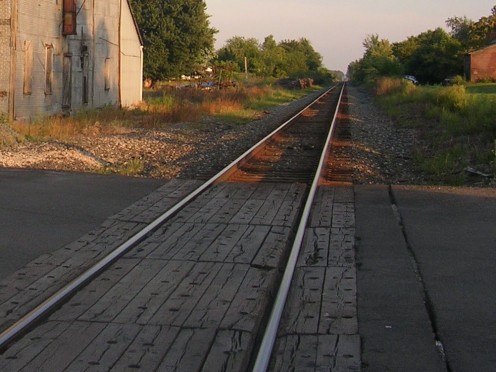
Exercising Caution
This rail crossing at the outskirts of a farming village in the heart of rural Ohio has no crossing gates, no blinking lights or dinging bells. It’s a reminder to us city folk about why our suburban and city school bus drivers stop at railroad crossings, open their doors, and listen for trains, even though the gates and bells are there.
Although this crossing in the middle of nowhere provides the visibility to see for hundreds of yards in either direction down the tracks before you even reach the crossing, caution is still in order. The only warning you'll get is the two-long-one-short-one-long blast of the diesel horn as the train nears the crossing.
Rusted Spikes

Marking the Places Where We Set the Coins
If you ever tried squashing coins under a train’s wheels, you know the setting-up part is easy, but finding the elongated coins after the train goes by is another matter. Rails and ties are set on gravel beds, and once a coin endures the impact of a steel wheel, it can be thrown anywhere, including into the small spaces between gravel bits.
My daughter and her second cousin set the coins on the rails and marked their locations with spikes while the rest of us hung around the tracks catching up on family matters and enjoying each other's company. Soon, it became clear that we’d have to wait quite a while before the next freight came through. Although freight trains pass through this tiny town many times during the day and night, it was a weekend day, so rail traffic was a bit sparse.
We left the coins and markers and made it safely home to Katie’s house to enjoy supper and another cousin’s birthday cake and to say our good-byes until another reunion.
A short while later, after all the other family members had left, my daughter and I heard a train come through. The late afternoon was still bright, and now the sky was laced with Ohio clouds. My daughter and I went up to the tracks to see if the magic of steel against coin would give us what we were after.

Our Lone Squashed Coin
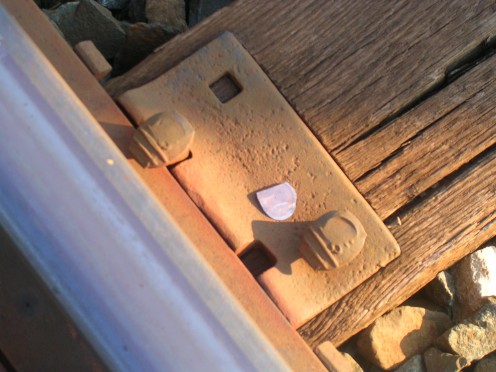
Recovering the Squashed Coins
Although we searched the gravel beds, surrounding weed banks, and bare ties for about a half-hour, around and beyond the markers that my daughter and her cousin had set, we found only one squashed coin and three that were never touched by the train's wheels.
Somewhere in that gravel bed along the train tracks in this idyllic rural town there must be thousands of coins that kids and kids-at-heart wished they could have recovered from their efforts of laying coins on rails.
I have to wonder if this exciting pastime will someday be abandoned and forgotten and if, in the distant future, archaeologists will speculate about why there is so much coinage scattered around railroad tracks. For now, we'll be keeping this tradition alive in our family for many generations to come, adding our share of future relics.
Coins Meet Steel
Squashed Coin FAQs
It is not illegal to squash a US coin.
There has never been a derailment proved to be caused by laying coins on tracks.
Between 1992 and 2007, six people died in the US as a result of placing coins on tracks.
Four Safety Tips for Squashing Coins on Train Tracks
- Never walk on the steel rails. They are not places to practice balance or show off your dancing skills. Always walk on the wooden ties or on the gravel embankment.
- Look and listen. Make sure you have a clear view in both directions of the track. If you like, you can put your ear to the steel rail; you will hear an approaching train, and if you do, get off the tracks.
- This is not an adventure for little children. Don’t encourage babies and toddlers to follow in their parents’ footsteps (they’ll figure out how to endanger themselves soon enough, without your help).
- Keep a good distance between you and the track; coins crushed by speeding steel wheels can wind up anywhere, including in your eye.
